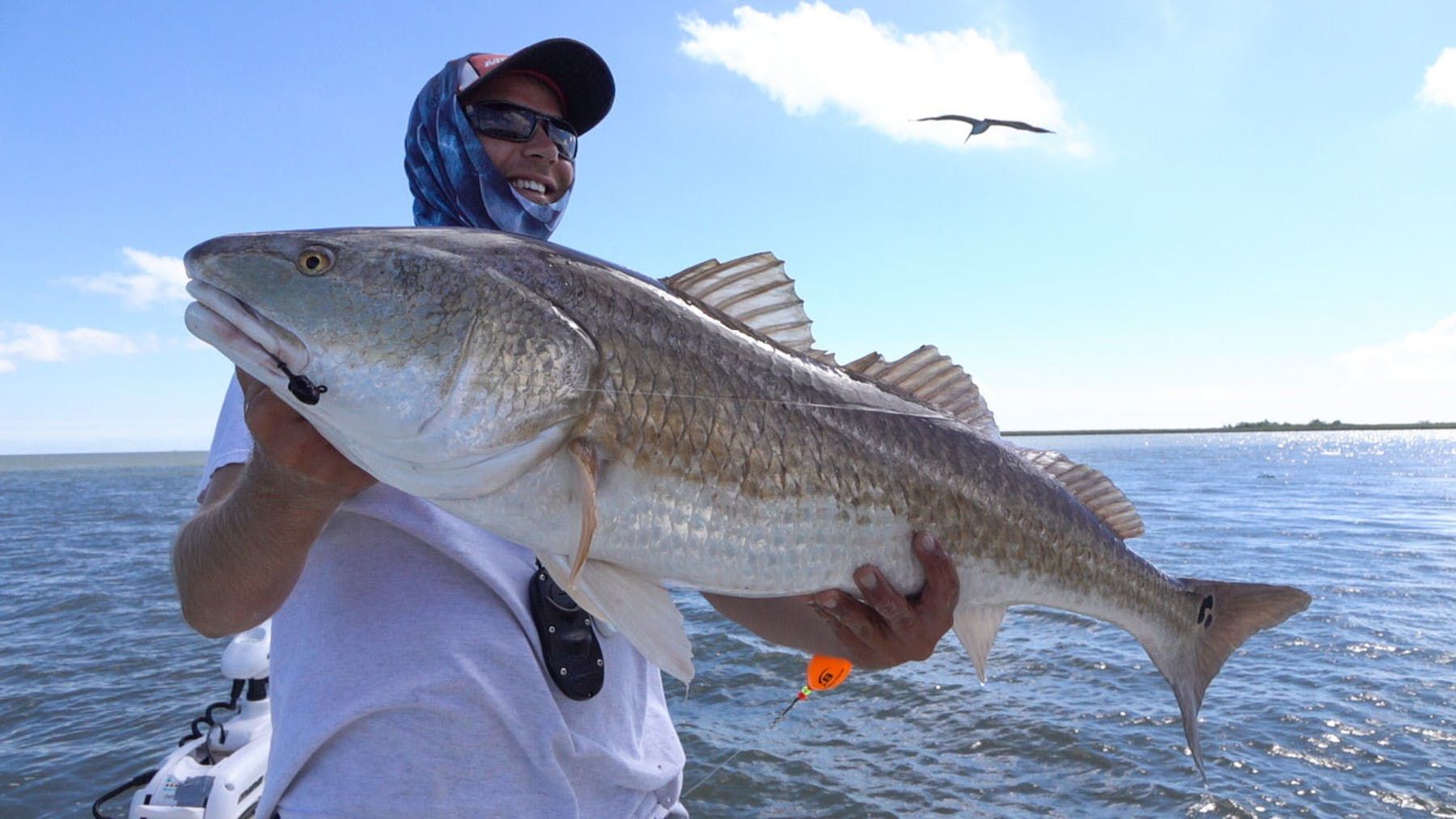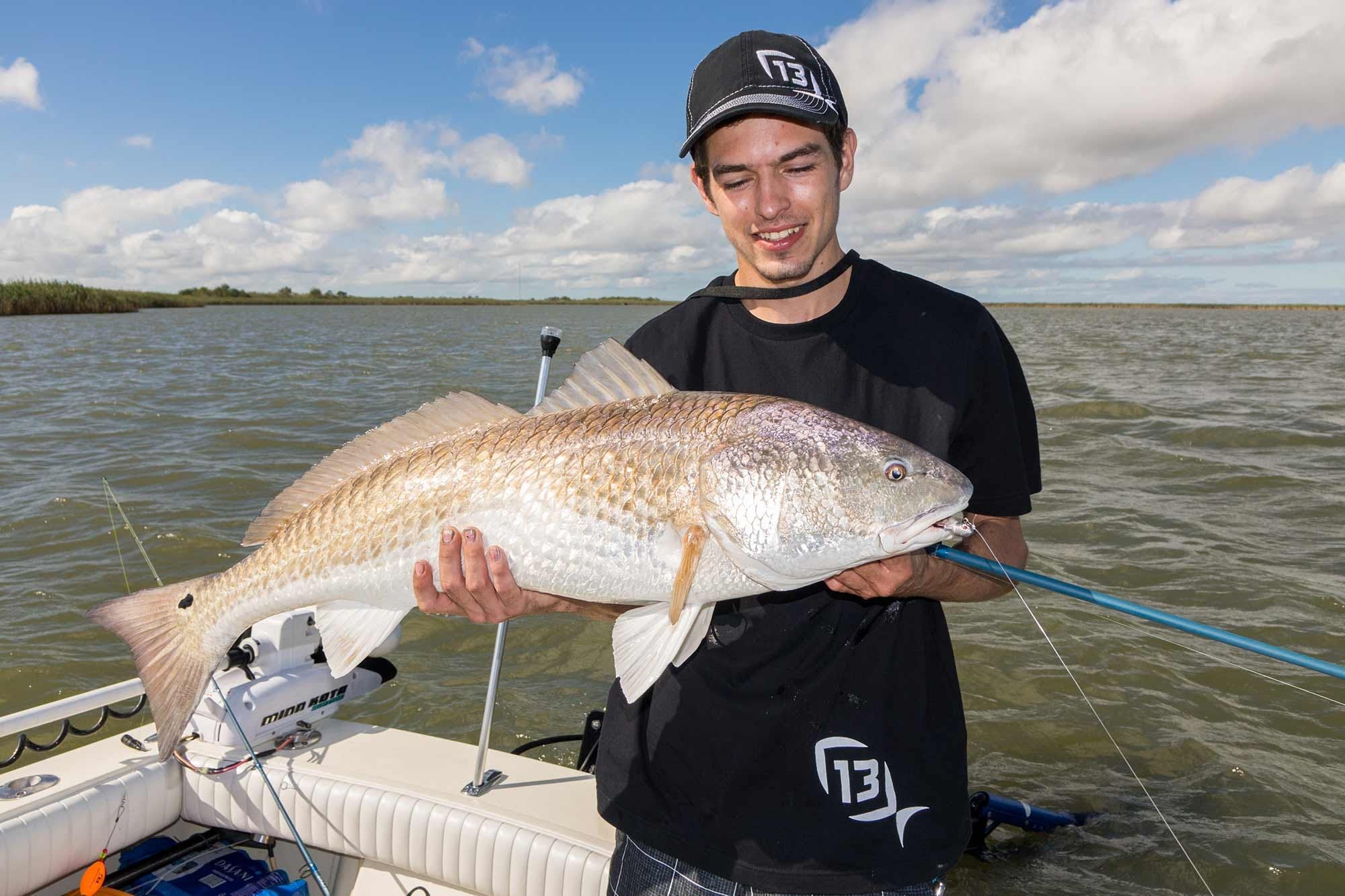Popping Cork Productivity

Making the case for why and how using cork beats a classic float.
If there’s one thing a predator fish wants in this world, it’s the meal another predator just found. Knowing this propensity, you can leverage such motivation to your benefit by utilizing a popping cork rig, which serves both presentation and promotional purposes.
Options include your favorite soft plastic baits on Mustad Inshore Darter Jig Heads or live baits, such as shrimp, pilchards, pogies or pigfish. Whatever you choose, hanging a bait below a float enables you to target particular depths, while the cork dynamics literally call fish to your position.
Low, sweeps of your rod tip tug the cork across the surface, where water resistance creates a surging, gurgling sound that sounds a lot like a fish gobbling a meal where water meets air. Concave corks create the most splash, but oval shapes — especially those on clacking rigs (beads flanking a cork mounted on a stem with line and leader tie offs) — do fine, as well.
Here are some of the top scenarios for popping cork rigs.
Seagrass Flats: Fertile pastures of swaying vegetation host loads of trout, but the grass is prone to snagging free-lined baits. Cork rigs eliminate the problem, while adding the audible attraction.
Open Flats: When redfish graze over wide open spaces, chasing the herds usually spurs them to run. But staking out an intercept point and popping those noise makers generally brings them running.
Oyster Reefs: Similar to grass beds, shell mounds are trout and redfish gathering spots, but they’re straight-up hook-grabbers. Work your rigs steadily over the tops of oyster reefs and let the bait hang long over the deep drop-offs.

Marsh Drains: Narrow passages through shallow vegetation create natural ambush points for predators awaiting disoriented meals.Whether the tide’s running in or out, floating a bait through the current corridor with occasional tugs is a guaranteed fish-getter.
Rigging Tips: Anytime you use live bait, there’s a risk of deep-hooking your fish, but that’s even more of a concern for cork rigs, as your response is often not as direct as with a lure. To keep your fish latched securely, but high in the mouth for easy release of shorts, use a Mustad Demon Perfect Circle hook in size 2/0-3/0, depending on the size of your bait and intended species.
Leader length should be mostly determined by the depth of water you’re fishing, but also bottom relief and fish position in the water column. For example, drifting a 6-foot grass flat may only require a 2- to 3-foot leader, whereas targeting trout suspending 8 feet down in 15 feet of water near the legs of a Louisiana drilling rig needs a longer string.
In these deeper situations, you might consider switching to a slip float rig with a bead and adjustable bobber stop above the cork. This option facilitates casting, as the cork holds near the end of the leader until it hits the water and then allows your bait to sink to the proper depth. (A split shot above the hook hastens the descent.)